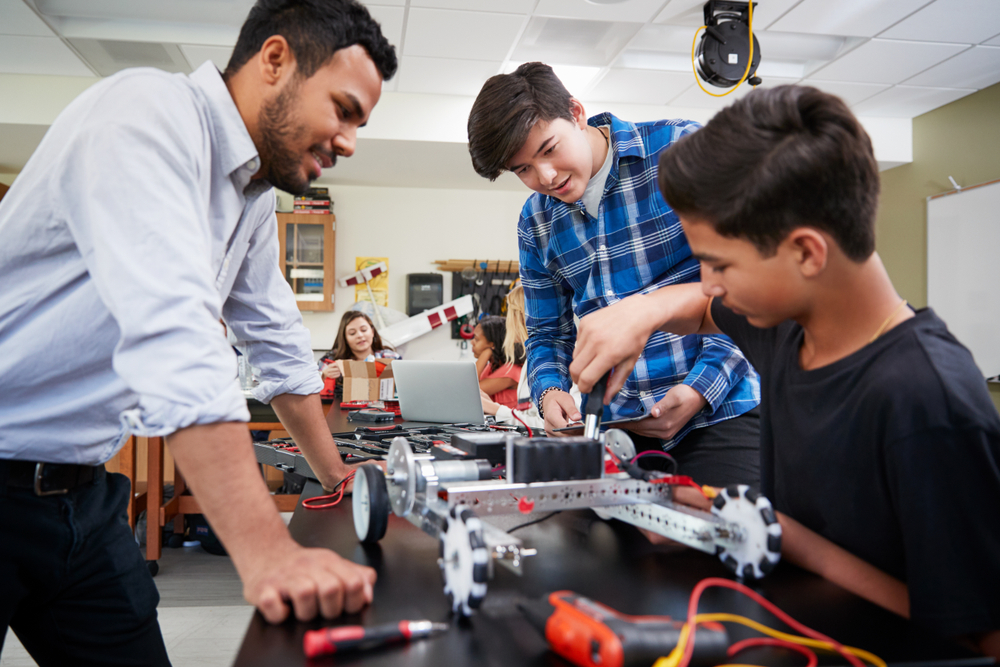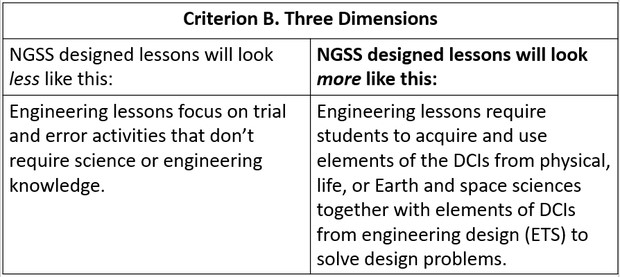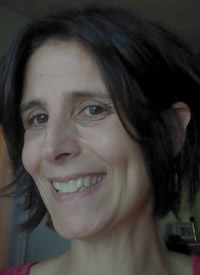Next Gen Navigator
Engineering Design Projects That Support Science Learning
Posted on 2019-08-22
Disclaimer: The views expressed in this blog post are those of the author(s) and do not necessarily reflect the official position of the National Science Teaching Association (NSTA).

Making the Shift to Engineering Lessons Designed for the NGSS
Engineering lessons have been taught in classrooms across the country long before the release of A Framework for K–12 Science Education and the Next Generation Science Standards (NGSS). So, what's new?
According to the Framework, "students should learn how science is utilized, in particular through the engineering design process, and they should come to appreciate the distinctions and relationships [among] engineering, technology, and applications of science." I think this excerpt from the NGSS Lesson Screener's "Less Like/More Like" tables best describes the shift the Framework necessitates when designing and teaching engineering lessons in our K–12 classrooms.

In other words, if students don't need big ideas in physical, life, or Earth and space sciences to solve a problem, they're not engineering—even if they are developing and/or using engineering ideas through their engagement with the engineering design process.
Most of the engineering lessons I've had the privilege of observing in classrooms across the country fall in the middle of this "less like – more like" continuum. Students understand that engineers enter the engineering design process (and not always in the same place or "step") when they have a problem to solve and the outcome is a new or improved technology. They conduct preliminary tests and collect data. Students then use this data to make informed design choices. Now we are tasked to go a little further to make sure we are preparing our students to undertake the world's challenges (NGSS Appendix I).
In this month's issue, we'll share the varied approaches teachers are using to continue their shift to the "more like" end of the continuum. Here's a preview:
>> Kathy Kennedy looks for opportunities to transform long-standing humanities projects at her new elementary school into engineering design challenges.
>> Greg Bartus uses questioning with middle school students to surface their thinking about the science ideas behind their design solutions.
>> Cory Culbertson identifies his target high school science disciplinary core ideas first, then looks for the right engineering design challenges.
Happy shifting!

Kate Soriano
Next Gen Navigator Guest Editor
Kate Soriano began her career as a geologist for the Environmental Protection Agency's Superfund program. Her work explaining science to affected communities made her realize that many people did not have access to a high-quality science education, and she wanted to change that. Soriano now has more than 20 years of experience teaching K–12 students science in both formal and informal educational settings. Currently, she is supporting teachers in their transition toward the N ext Generation Science Standards. Soriano is an NSTA NGSS Professional Learning Facilitator and Instructional Coach. She also serves on the EQuIP Peer Review Panel for Science. She holds a bachelor of science degree in geology and geophysics from Boston College, a master of science degree in geology from the University of Wisconsin–Madison, and a master of arts in education degree from Humboldt State University.
Science and Humanities Classes Collaborate for Engineering Integration
With limited time dedicated for science instruction, K– 4 science teacher Kathy Kennedy finds unique opportunities to connect science and engineering to established humanities activities. Read more.
Linking Science and Engineering Through Good Questions
Middle school science teacher Greg Bartus uses questions to engage his students in the science ideas they are learning while participating in engineering design activities. Read more.
Designing Engineering Projects That Teach Science Concepts
High school science teacher Cory Culbertson wants to ensure that his students strengthen their understanding of science concepts through their engineering projects, not just before and after them. Realizing one of his most popular engineering design lessons was doing little to help bolster science learning, he overhauled the entire project, going back to square one and identifying what science ideas he really wanted his students to learn. Read more.
Note: The Next Gen Navigator is a monthly e-newsletter from NSTA delivering information, insights, resources, and professional learning opportunities for science educators by science educators on the Next Generation Science Standards and three-dimensional instruction. Click here to sign up to receive the Navigator every month.
The mission of NSTA is to promote excellence and innovation in science teaching and learning for all.
NGSS Professional Learning old Three-Dimensional Learning


